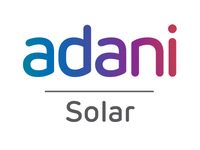The industry is poised to adopt 166mm format as an intermediary technology of 2021 as the market shifts to larger wafer sizes of 182 and beyond from 2022 and 2023.
The PV industry has recently leapfrogged with higher wafer sizes and different module sizes. The industry is witnessing many manufacturers forming an alliance with either the M10 or G12 Wafer sizes going forward.
Grappling with the wafer size
While 158.75mm (G1) and 166mm (M6) remain the mainstream formats now globally, Indian manufacturers are yet to come to terms with 158.75mm (G1 Wafers) and not the entire industry has moved from M2(156.75-157mm) to G1 wafers.
The change in wafer sizes impact the cell sizes equally and proportionately on the Module dimensions. Module manufacturers must ensure the right gaps between cells and strings and the subsequent clearance and creepage distances from current carrying component to the edge of the laminate as per the latest IEC / IS standards.
The industry is poised to adopt 166mm format as an intermediary technology of 2021 as the market shifts to larger wafer sizes of 182 and beyond from 2022 and 2023.
We expect the upstream wafer market will drive the changes along with the adaptation of the downstream segment and the BOS ancillary’s supporting the upstream market.
The bottleneck in large wafer development is the lack of furnaces for larger PV glass, which requires more than a year to be upgraded to accommodate larger modules. It remains to be seen how much the larger power will drive the BOS costs lower and drive the LCOE lower across the globe.
The change being destructive must move the entire market segment to larger sizes and not just one or two markets adopting it. Previously we saw American, US, European, Chinese, Japanese and Indian markets behaving differently with module sizes and number of cells. Once the uniformity in market acceptance for module sizes for residential, C&I and Utility segment prevails, we would have similar module sizes rolled into the market.
The industry will see teething issues of resolving the cell breakage and downgrade rate and Inverter ratings and trackers to be ready shortly. The entire industry must go hand-in-hand to develop the larger wafer size.
Shape of things to come
It remains to be seen whether module makers choose ½ cuts or 1/3 cuts in their process of modules. The decision of cuts leads to different Isc and Voc parameters and different string designs at the system level. Higher current modules would lead to change in cables and inverter subsequently.
We foresee module dimensions can become as big as 2.3m long and 1.3 m wide and with module currents becoming as high as 18A+ and in some cases voltages becoming 70V+ too. Downstream partners and EPCs to remain vigilant on the upcoming changes as an upstream change for better efficiency and cost optimization will lead to several changes at the downstream segment. It is foreseeable that 166mm-modules will be adopted by the residential sector, while 182mm- and 210mm-modules will be used in utility-scale solar plants. As n-type heterojunction (HJT) and TOPC on technologies gradually advance, manufacturers will turn their R&D focus toward the combination of large wafers with n-type technologies to maximize benefits.
Indian module manufacturers will have to lay more impetus on the ongoing changes happening globally and new production tool equipment that are being ordered should meet the power demand of 500-600W power ranges from the existing 300W+ power ranges, that are prevalent across more than 70% of Indian manufacturers currently.
The changes that we speak are inevitable and adapting to the changes becomes all the more important and how soon we adapt to remain competent in a dynamic and disruptive technology change market.

POWERTECH REVIEW provides cognitive exchange of information on the power sector, which will facilitate you keep updated on a real time basis.
Please follow our magazine page and also join our LinkedIn Group- exclusive group created for manufacturing professionals community
Join us on LinkedIn Group : https://www.linkedin.com/groups/10476643/
Follow us on LinkedIn : https://www.linkedin.com/company/powertech-review/

